Analyte Specific Reagent. Analytical and performance characteristics are not established.
- Clone
- Bu15
- Workshop
- V S143
- Other Names
- Integrin αx subunit, ITGAX, CR4, p150
- Isotype
- Mouse IgG1, κ
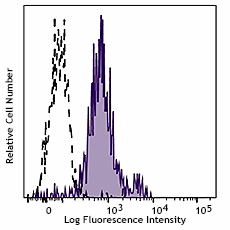
-

Typical results from human peripheral blood monocytes stained either with Bu15 PerCP/Cyanine5.5 used at 5µL/test (filled histogram) or with an isotype control (open histogram).
| Cat # | Size | Price | Quantity Check Availability | Save | ||
|---|---|---|---|---|---|---|
| 980610 | 500 µL | 588 CHF | ||||
CD11c is a 145-150 kD type I transmembrane glycoprotein also known as integrin αx and CR4. CD11c non-covalently associates with integrin β2 (CD18) and is expressed on monocytes/macrophages, dendritic cells, granulocytes, NK cells, and subsets of T and B cells. CD11c has been reported to play a role in adhesion and CTL killing through its interactions with fibrinogen, CD54, and iC3b.
Product DetailsProduct Details
- Reactivity
- Human
- Formulation
- Phosphate-buffered solution, pH 7.2, containing True-Stain Monocyte Blocker™, 0.09% sodium azide, 0.2% (w/v) BSA (origin USA), and a stabilizer.
- Preparation
- The antibody was purified by affinity chromatography and conjugated with PerCP/Cyanine5.5 under optimal conditions.
- Concentration
- 200 µg/mL
- Storage & Handling
- The antibody solution should be stored undiluted between 2°C and 8°C, and protected from prolonged exposure to light. Do not freeze.
- Application
-
Suggested for Flow Cytometry
- Disclaimer
-
WARNINGS AND PRECAUTIONS
- Use appropriate personal protective equipment and safety practices per universal precautions when working with this reagent. Refer to the reagent safety data sheet.
- This antibody contains sodium azide. Follow federal, state and local regulations to dispose of this reagent. Sodium azide build-up in metal wastepipes may lead to explosive conditions; if disposing of reagent down wastepipes, flush with water after disposal.
- All specimens, samples and any material coming in contact with them should be considered potentially infectious and should be disposed of with proper precautions and in accordance with federal, state and local regulations.
- Do not use this reagent beyond the expiration date stated on the label.
- Do not use this reagent if it appears cloudy or if there is any change in the appearance of the reagent as these may be an indication of possible deterioration.
- Avoid prolonged exposure of the reagent or stained cells to light.
Antigen Details
- Antigen References
-
- Petty H, et al. 1996. Immunol Today. 17:209-12.
- Springer T. 1994. Cell. 76:301-14.
- Ihanus E, et al. 2007. Blood. 109:802-10.
Compare Data Across All Formats
This data display is provided for general comparisons between formats.
Your actual data may vary due to variations in samples, target cells, instruments and their settings, staining conditions, and other factors.
If you need assistance with selecting the best format contact our expert technical support team.
-
APC/Cyanine7 anti-human CD11c
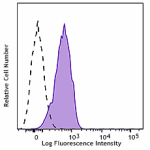
Human peripheral blood granulocytes stained with CD11c (clon... -
Purified anti-human CD11c
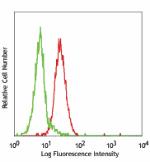
Human peripheral blood granulocytes stained with purified Bu... -
PE anti-human CD11c
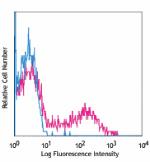
Human peripheral blood lymphocytes stained with Bu15 PE -
APC anti-human CD11c
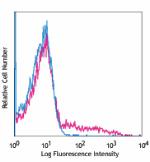
Human peripheral blood lymphocytes stained with Bu15 APC -
PerCP/Cyanine5.5 anti-human CD11c
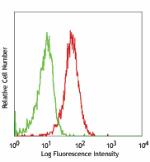
Human peripheral blood granulocytes stained with Bu15 PerCP/... -
Pacific Blue™ anti-human CD11c
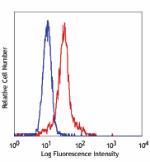
Human peripheral blood granulocytes stained with Bu15 Pacifi... -
FITC anti-human CD11c
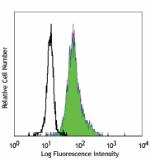
Human peripheral blood monocytes stained with BU15 FITC. -
PE/Cyanine7 anti-human CD11c
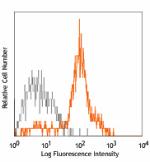
Human peripheral blood monocytes stained with Bu15 PE/Cyanin... -
Alexa Fluor® 700 anti-human CD11c
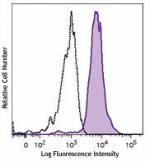
Human peripheral blood monocytes were stained with CD11c (cl... -
Purified anti-human CD11c (Maxpar® Ready)
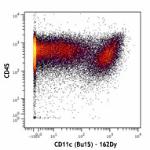
Human PBMCs stained with 154Sm-anti-CD45 (HI30) and 162Dy-an... -
Brilliant Violet 421™ anti-human CD11c
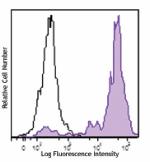
Human peripheral blood monocytes were stained with CD11c (cl... -
PE/Dazzle™ 594 anti-human CD11c
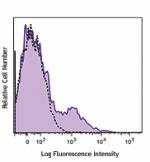
Human peripheral blood lymphocytes were stained with CD11c (... -
Biotin anti-human CD11c
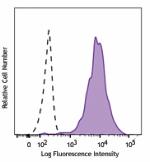
Human peripheral blood monocytes were stained with biotinyl... -
Alexa Fluor® 647 anti-human CD11c
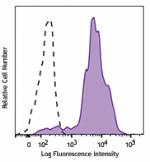
Human peripheral blood monocytes were stained with CD11c (cl... -
PerCP anti-human CD11c
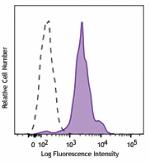
Human peripheral blood monocytes were stained with CD11c (cl... -
Alexa Fluor® 488 anti-human CD11c
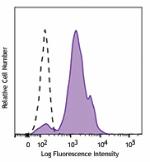
Human peripheral blood monocytes were stained with CD11c (cl... -
Brilliant Violet 650™ anti-human CD11c
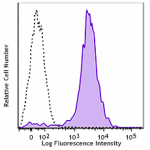
Human peripheral blood monocytes were stained with CD11c (cl... -
APC anti-human CD11c

Typical results from human peripheral blood lymphocytes stai... -
PE anti-human CD11c
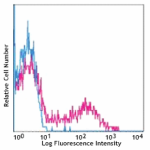
Typical results from human peripheral blood lymphocytes stai... -
APC/Fire™ 750 anti-human CD11c
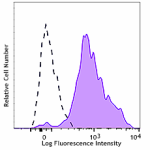
Human peripheral blood monocytes were stained with anti-huma... -
PE/Cyanine7 anti-human CD11c
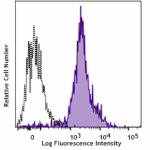
Typical results from human peripheral blood monocytes staine... -
PerCP/Cyanine5.5 anti-human CD11c
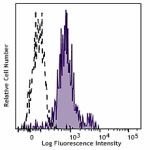
Typical results from human peripheral blood monocytes staine... -
Pacific Blue™ anti-human CD11c
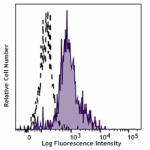
Typical results from human peripheral blood monocytes staine... -
GMP PE anti-human CD11c

Typical results from human peripheral blood lymphocytes stai... -
GMP APC anti-human CD11c
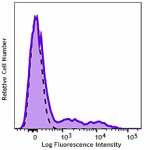
Typical results from human peripheral blood lymphocytes stai... -
Spark Blue™ 515 anti-human CD11c

Human peripheral blood cells were surface stained with (left... -
Spark YG™ 593 anti-human CD11c

Human peripheral blood lymphocytes were stained with anti-hu... -
GMP Pacific Blue™ anti-human CD11c
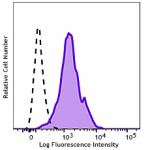
Typical results from human peripheral blood monocytes staine... -
GMP PerCP/Cyanine5.5 anti-human CD11c
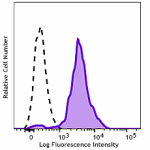
Typical results from human peripheral blood monocytes staine... -
PE/Fire™ 640 anti-human CD11c

Human peripheral blood lymphocytes were stained with anti-hu... -
PE/Fire™ 700 anti-human CD11c

Human peripheral blood cells were stained with anti-human CD... -
Brilliant Violet 711™ anti-human CD11c

Human peripheral blood lymphocytes were stained with anti-hu... -
Brilliant Violet 785™ anti-human CD11c

Human peripheral blood lymphocytes were stained with anti-hu... -
Brilliant Violet 605™ anti-human CD11c

Human peripheral blood lymphocytes were stained with anti-hu...
 Login / Register
Login / Register 






Follow Us